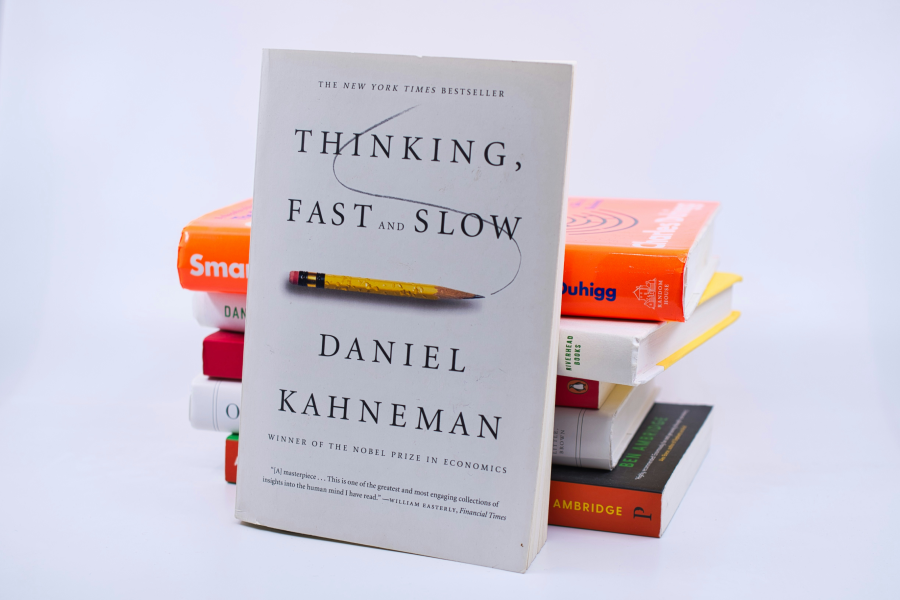
Despite the fast rise of apps and AI-powered life coaches, positive thinking books remain foundational in personal growth. They carry timeless principles that empower readers to transform challenges into progress. Success is often less about talent and more about attitude, consistency, and the right mental framework. These books guide individuals toward cultivating those essentials.

High achievers credit their breakthroughs not to luck, but to relentless clarity and emotional discipline. That discipline is frequently shaped by insights found in positive thinking books. Unlike fleeting motivation, the ideas from these works offer lasting strategies. There is an observable trend: people are turning to print again for reflection. Readers seek peace, depth, and focus, especially in an age of constant distraction. The surge in interest around the Real Self-Care book by Dr. Pooja Lakshmin reflects this shift. It’s not just about optimism, but about building a life of sustainable meaning. Understanding how thoughts shape outcomes is powerful. A strong mindset fuels health, productivity, and even relationships. Positive thinking books train the brain to see what’s possible, not just probable. They teach how to persist when others quit. In a world that values speed, these books emphasize depth. Success does not come from rushing—it comes from realignment. With these tools, anyone can rise above fear, distraction, and doubt.
Positive thinking is not just blind optimism. It’s a toolset for clarity, purpose, and perseverance. Some books go beyond surface-level advice and offer deeply researched frameworks. These titles have helped thousands not only survive adversity but grow from it. One example is Jim Collins' Good to Great. Though focused on business, its lessons on focus, discipline, and mindset apply broadly. Readers learn how thought patterns influence whether success becomes a temporary win or a consistent outcome. Another must-read is The Science of Self-Discipline. This title dives into cognitive behavior patterns and how to rewire habits. It demonstrates how self-discipline is more skill than talent. Positive thinking is a cornerstone of that transformation. The rise of neuroscience-backed titles like Hidden Potential by Adam Grant reflects modern interest in scientifically grounded optimism. These are not just self-help books—they are life manuals. For those reading regularly, a premium bamboo desktop bookshelf is a smart addition. It keeps favorites accessible and creates a visually calming reading space.

Many readers consume books but struggle to apply them. The key to transformation is engagement. Rather than passive reading, active application makes all the difference. Here are several techniques to enhance the power of positive thinking books:

The genre of positive thinking books has evolved. Today’s authors blend science with personal experience, making the material more relatable and credible. Trends now lean toward practical psychology, neuroscience, and cognitive flexibility. Books no longer promise overnight success. They focus instead on rewiring habits and redefining progress. Readers crave transparency. They want to know that struggle is part of the process—not something to avoid. Adam Grant’s Hidden Potential is a prime example of this shift. It emphasizes measurable growth rather than generic encouragement. Another trend is the rise of intersectional well-being. Books like Real Self-Care address mental health, identity, and boundaries alongside positivity. Readers respond better to nuanced, layered content. Also trending: enhanced book design and reading accessories. A well-organized space with the help of a functional bookshelf improves focus. A clean setup makes reading a pleasure, not a task. These trends reveal a broader truth: personal growth must be holistic. Success is not separate from mental well-being. Positive thinking books now reflect that reality.
While outcomes differ, consistent readers report several shared benefits. The first is mental resilience. A steady diet of positive thinking books builds an inner voice that counters negativity. Another major benefit is clarity. These books train the mind to focus on long-term outcomes rather than daily chaos. Readers begin to question their own limits. They develop frameworks for overcoming failure and building habits. Books like The Science of Self-Discipline prove that willpower can be grown like a muscle. Professionals also see workplace gains. Positive thinkers perform better under pressure and recover faster from setbacks. The ripple effect touches personal life too—healthier relationships, better sleep, and increased optimism. It’s not just belief—it’s behavior. These books encourage action: setting boundaries, sticking to routines, thinking long-term. Many readers report success they never thought possible. These changes don’t happen overnight. But over months, the results compound. The brain learns new responses. Emotional stamina increases. Confidence grows. Positive thinking books help engineer that shift.

Even the best readers hit walls. Staying consistent with personal growth takes effort and planning. Here are proven tips for making positive thinking books part of a lifestyle.
Distraction is now the norm. Social media, notifications, and over-scheduling drain mental energy. In such an environment, focus becomes a superpower. Positive thinking books offer that focus. They build mental armor against noise and negativity. In the silence of reading, clarity returns. The fog of modern life clears. Books like Hidden Potential and The Science of Self-Discipline teach readers how to control attention. In 2025, this focus is more valuable than ever. The ability to steer thoughts in a positive direction becomes a competitive edge. Whether in career, fitness, or relationships—those with a resilient mindset win. Positive thinking books provide the framework for that edge. They restore what the digital world depletes. With consistency, readers shift from reactive to intentional living. That shift becomes visible. People stand taller. They speak with certainty. They lead with vision. The change is subtle at first, then unmistakable. It begins with one page at a time.
Change rarely happens overnight, especially when it comes to mental habits. Positive thinking books often emphasize the importance of repetition and routine. Repeated exposure to empowering thoughts reprograms the subconscious mind. Over time, the brain begins to accept affirming beliefs as reality, reinforcing new behaviors. Books like The Science of Self-Discipline reveal how willpower strengthens with consistent mental practice. When readers revisit favorite passages daily, it helps them internalize the core messages. A practical tip: use a book holder to keep your chosen titles visible, reinforcing the habit. The physical presence of the book alone can serve as a cognitive cue for focused, mindful reading. Through habit formation and exposure, thoughts become belief systems, influencing decisions and outcomes. This subconscious alignment is what makes daily reading of positive thinking books so impactful. What starts as a conscious effort slowly becomes second nature. And that’s where meaningful personal transformation takes root.

Reading without reflection limits the depth of growth. Many seasoned professionals keep a journal beside their reading space. Positive thinking books are not just to be read—they're meant to be engaged with. Writing about new ideas makes them stick and clarifies personal meaning. It’s recommended to pause after each chapter and jot down key takeaways. For example, after reading Real Self-Care, readers benefit more when they actively assess what self-care means to them. It transforms the material from theory to action. Regular journaling also tracks mindset shifts over time. This practice deepens self-awareness and reveals patterns. Those serious about self-improvement often find clarity by pairing reading with reflection. A small notebook or digital journal can make a powerful companion. When combined, reading and writing create a loop of insight, intention, and implementation. Together, they make every page of positive thinking books more personal and powerful.
Top picks just for you